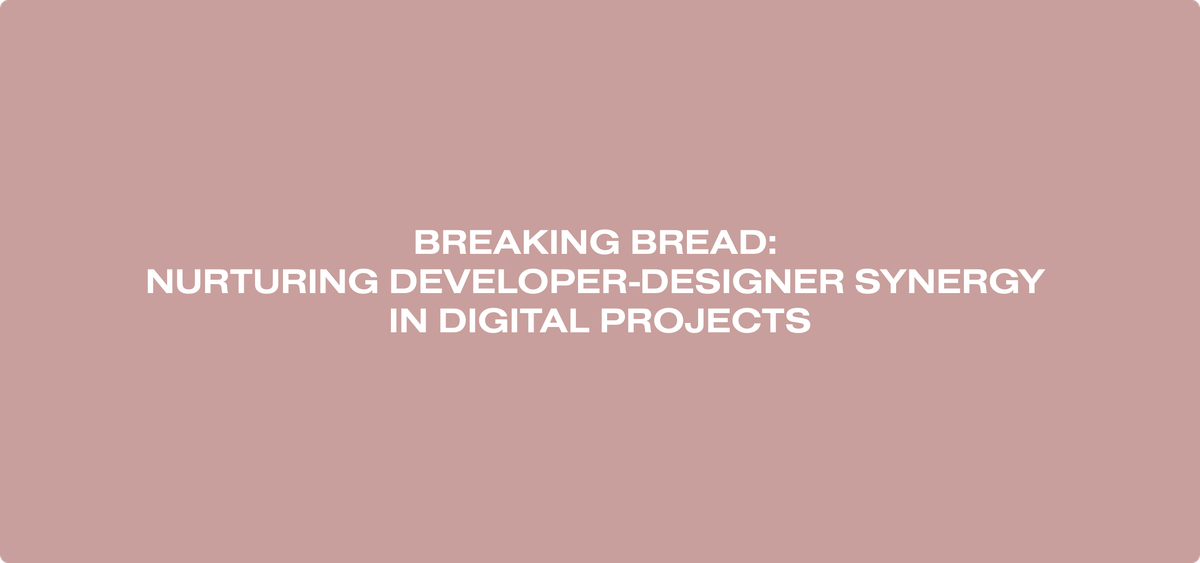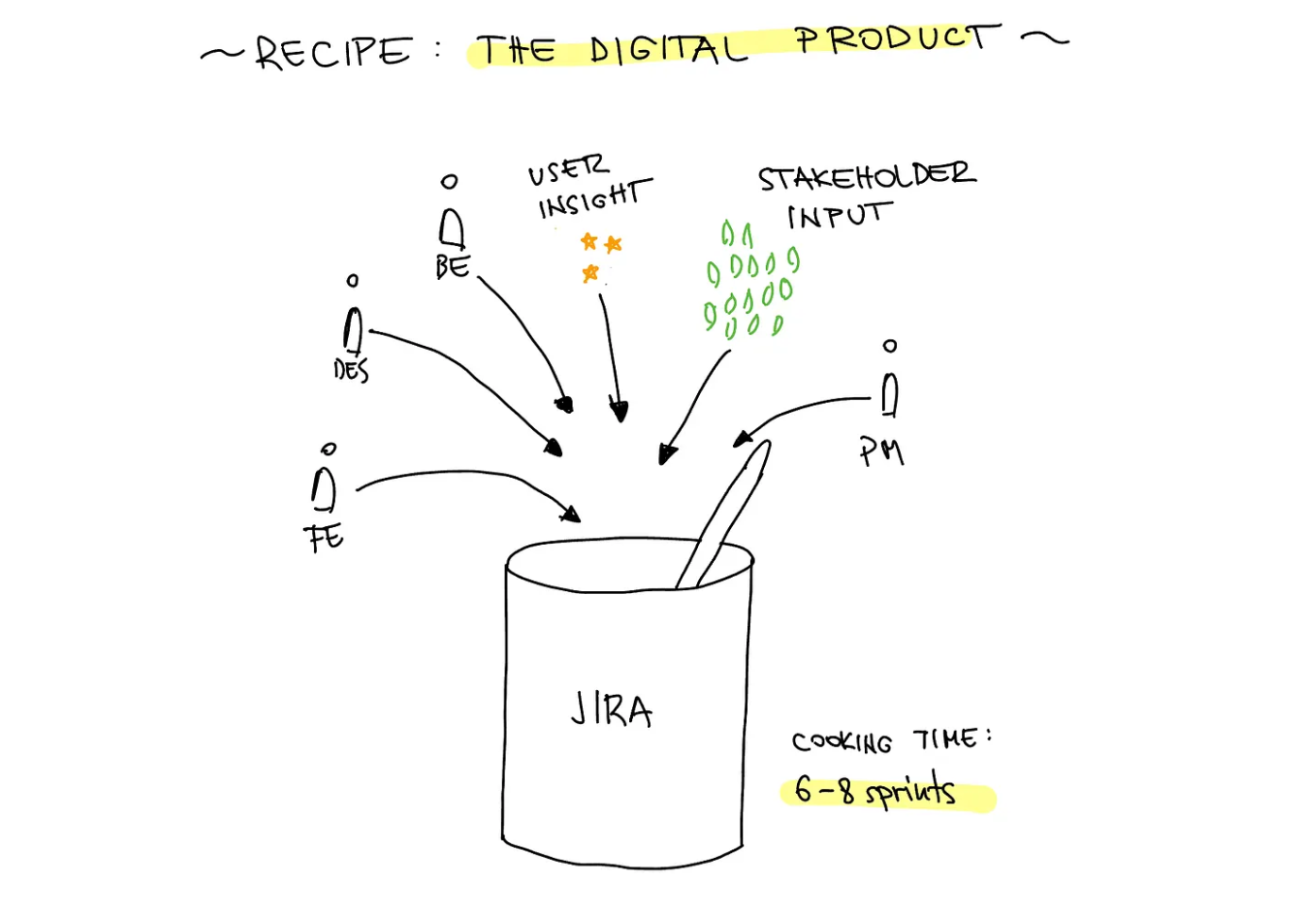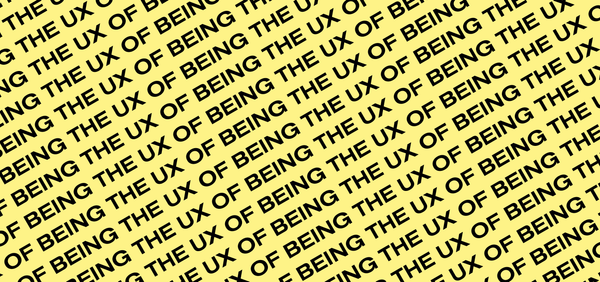On collaboration in product teams, and cooking

This article is based on a talk I did at the JCON Open Blend Slovenia 2023 conference in Portorož, Slovenia. Although I rarely shy away from a challenge, speaking in front of a room full of developers definitely gave me some jitters. I decided to speak about something I know that connects both our worlds — design and development, with the purpose of creating exceptional digital products, a subject I’m deeply passionate about.
I usually argue that great collaboration is key to noteworthy digital products. But then there’s so much friction in our teams. Let’s look at a classic designer-developer relationship.

I decided that would be the premise of my conference talk. A colleague — developer saw this and asked me with a puzzled look: “Are you sure, you want to show this to a room full of developers?” At that point, I wasn’t. 😅
His talk didn’t make it into the conference, mine did. The struggle must be real.
Cooking Up Digital Strategies
I like to cook. Following a recipe is very predictable and safe. Following each step ensures a very tasty result. Similar to recipes, in digital products we have frameworks and mental models. I’m a big fan. Many of them do read like a cooking recipe.
First, gather the ingredients:
- 1 senior backend developer/tech lead for the base
- stakeholder insights to spice things up
- 1 designer and 1 front-end developer for garnish
- a pinch of user insights (use to taste)
- 1 product manager to stir.
Put all ingredients into Jira. Cook for about 6–8 sprints. Stir every two weeks. Serve with a side of go-to-market strategy.
Voila! Perfect digital product, flying off the proverbial shelf.

You survey your surroundings, confirming you have all the necessary ingredients, and decide to give it a shot. You meticulously follow the recipe, ensuring the quantities are just right (we wouldn’t want to overdo the human factor), simmering it slowly, and adding a dash of product ownership for that extra flavor. But the outcome is often hard to digest.
What went wrong? The recipe held the promise of success, but it often oversimplifies the process, omitting one highly unpredictable element — human nature. People are unique and unpredictable, and when you factor them into the equation, things tend to get messy. These frameworks rarely account for the ever-changing conditions that shape our product development journey.
The only process that works is built for your people, for your team. From the experience you have. For your business. Sure, read about others. Get inspired. Look at what others are doing. Maybe even learn from their mistakes. Always take into account your specifics.
On chefs and complexities
Before we start cooking, we must decide what to cook. In real life, it’s relatively simple; you consider factors like time, occasion, the number of people, and whether you need to go to the store. However, digital product development, it’s far more complex. The larger the company, the more people influence the menu. There are three key roles in creating a successful digital product:
- The product manager focuses on business stakeholders, markets, and problem definition.
- The senior developer/tech lead handles architecture, technology, and security.
- The designer ensures the best user experience.
Together, this product trio ensures that the product is viable, feasible, and desirable. However, they need to make lots of decisions to get there.
The secret sauce
Remember Steve Jobs and his iconic turtlenecks? He simplified his clothing choices to conserve headspace. Apparently, the more decisions we make in a day, the more tired we get, and our ability to make good decisions for ourselves or our teams decreases. An average person makes approximately 225 decisions per day just about food! That’s a really big number.
So once we get into the right headspace, another thing is usually missing: mutual understanding. Only when we get a shared picture of what we’re talking about, we can make decisions, but not before.
Teams (or framework makers) focus a lot of attention on making decisions, but not a lot of time on understanding decisions and each other. We don’t have a shared vocabulary, which creates a void in our shared understanding of implications and assumptions. And even when teams realize the issue, there’s only so much cognitive capacity available to do the hard work to close the gap.
Here lies the opportunity — we need to find a common language where we can actually converse with each other and understand each other. Many times I hear, that design does not get a proverbial ‘seat at the table’, because we don’t speak business. Sometimes I hear from developers, that we don’t speak developer. The predominant language of most people, though, is visual.
People are visual. Your team members are too. The job is to get information and visualize it in a way our team members, stakeholders, and users can understand, experience, and provide feedback on. This doesn’t mean just creating attractive screens. Instead, craft rough paper prototypes, map out user flows, and sketch storyboards. Keep it simple. Show, don’t tell.
If I return to my cooking metaphor, both designers and developers are often considered to be there to cut vegetables. But we can be so much more than that. We are so much more than that. Ask to be part of the process. Ask to be part of the decision-making. Participate in user interviews. Draw me a flowchart. Help me understand.
Don’t be just a vegetable cutter. The world is full of different flavors.
If you’re interested in delving further into this subject, I’ve collaborated with Oto Brglez & Ogrodje on a podcast. You can listen to it (in Slovenian) here.




